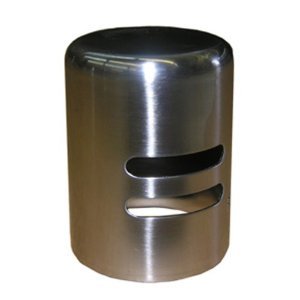Are you tired of dealing with a clogged dishwasher that leaves your dishes dirty and your kitchen in disarray? A clogged dishwasher can be frustrating, but fear not! In this comprehensive guide, we will walk you through the process of clearing a clogged dishwasher. By following these simple steps, you’ll have your dishwasher running smoothly again in no time. So, let’s get started!
A clogged dishwasher can result in inefficient cleaning, unpleasant odors, and even potential damage to the appliance. It’s important to address the issue promptly to ensure your dishwasher functions optimally. By following the steps outlined in this article, you’ll be able to clear the clog and restore your dishwasher’s performance.
Table of Contents
Signs of a Clogged Dishwasher
Before we dive into the steps of clearing a clogged dishwasher, it’s crucial to identify the signs that indicate a clog. These signs may include:
- Standing water in the bottom of the dishwasher
- Poor drainage after a cycle
- Food particles or debris on dishes after washing
- Unpleasant smells emanating from the dishwasher
If you notice any of these signs, it’s likely that your dishwasher is clogged and needs attention.
Safety Precautions
Before attempting any repairs or maintenance on your dishwasher, it’s essential to prioritize safety. Here are a few precautions to keep in mind:
- Turn off the power: Ensure the dishwasher is disconnected from the power supply before starting any work.
- Wear protective gear: It’s advisable to wear gloves and safety glasses to protect your hands and eyes.
- Consult the manufacturer’s manual: Familiarize yourself with the specific instructions and recommendations provided by the dishwasher’s manufacturer.
Tools and Materials Needed
To clear a clogged dishwasher, you will need the following tools and materials:

- Screwdriver
- Soft-bristle brush
- Vinegar
- Baking soda
- Clean cloth or sponge
Gather these items before you begin, ensuring you have everything you need to complete the process smoothly.
Step 1: Empty the Dishwasher
Start by removing all dishes, utensils, and any other items from the dishwasher. It’s important to work on a clean and empty machine to effectively clear the clog.
Step 2: Remove the Filter
Locate the dishwasher’s filter, usually at the bottom of the appliance. Depending on the model, you may need to unscrew a cover or simply lift out the filter. Once removed, rinse it under warm water to eliminate any debris or residue.
Step 3: Clear the Spray Arms
The spray arms are responsible for distributing water throughout the dishwasher during a cycle. If they are clogged, the cleaning performance will be compromised. Remove the spray arms and use a soft-bristle brush to dislodge any particles or buildup. Rinse them thoroughly before reattaching them.
Step 4: Check the Drain Hose
Inspect the drain hose for any obstructions or kinks that may be causing the clog. Disconnect the hose from the dishwasher and the sink or garbage disposal. Use a brush or a straightened wire hanger to remove any debris or blockages. Once cleared, reattach the drain hose securely.
Step 5: Clean the Drain Pump
The drain pump is responsible for removing water from the dishwasher. If it gets clogged, water won’t drain properly, leading to issues. Locate the drain pump, usually at the bottom of the dishwasher, and remove any debris or objects that may be obstructing its function. Refer to the manufacturer’s manual for specific instructions on accessing and cleaning the drain pump.
Step 6: Unclog the Air Gap
The air gap prevents backflow and ensures proper drainage from the dishwasher. It can sometimes become clogged with debris. Locate the air gap, usually mounted on the countertop or sink, and remove the cap. Clean the air gap thoroughly using a brush and rinse it with water. Replace the cap once it’s clean.

Step 7: Run a Test Cycle
After completing the previous steps, it’s time to put your dishwasher to the test. Reassemble all the components, including the filter, spray arms, drain hose, and air gap. Once everything is securely in place, run a test cycle with no dishes inside. Observe the dishwasher’s performance and check if the clog has been cleared. If the water drains properly and the dishwasher functions as expected, congratulations! You have successfully cleared the clog.
Preventing Future Clogs
To avoid future clogs in your dishwasher, follow these preventive measures:
- Scrape dishes before loading: Remove excess food particles from dishes before placing them in the dishwasher to prevent debris from accumulating.
- Clean the dishwasher regularly: Regularly clean the filter, spray arms, and other components to remove any buildup that can lead to clogs.
- Use dishwasher-safe items only: Ensure that all items placed in the dishwasher are dishwasher-safe and won’t break down or leave residues that can cause clogs.
- Run hot water before starting a cycle: Before running a cycle, run the hot water tap in your sink until the water is hot. This helps in maintaining proper water temperature for efficient cleaning.

Can I use chemical drain cleaners to clear a clogged dishwasher?
Chemical drain cleaners are not recommended for clearing a clogged dishwasher. These cleaners can be harsh and may damage the dishwasher’s components. It’s best to stick to the methods outlined in this guide for a safe and effective solution.
What if the clog persists after following the steps?
If the clog persists after following the steps outlined in this guide, it may be a sign of a more significant issue. It’s advisable to consult a professional dishwasher repair service to diagnose and resolve the problem.
How often should I clean my dishwasher to prevent clogs?
Cleaning your dishwasher at least once every three months is recommended to prevent clogs and maintain optimal performance. However, if you notice any signs of a clog, it’s best to address it immediately.
Can I use vinegar and baking soda to clean my dishwasher regularly?
Yes, vinegar and baking sodaare effective and natural cleaners that can be used to clean your dishwasher regularly. They help remove buildup and odors. Run an empty cycle with a cup of vinegar placed in a dishwasher-safe container on the top rack. Then sprinkle baking soda on the bottom of the dishwasher and run another short cycle. This helps in keeping your dishwasher clean and fresh.
Is it normal to have some water at the bottom of the dishwasher after a cycle?
It is normal to have a small amount of water at the bottom of the dishwasher after a cycle. However, if you notice excessive water or standing water, it may indicate a clog or drainage issue that needs to be addressed.
How to fix a clogged dishwasher?
There are a few steps you can take to fix a clogged dishwasher. First, check the drain basket at the bottom of the dishwasher for any debris or food particles that may be causing the clog. Remove and clean it thoroughly. Next, inspect the spray arms to ensure they are not blocked by any objects or buildup. Use a toothpick or small brush to clear out any obstructions.
If these steps don’t resolve the issue, you can try running a cycle with vinegar. Fill a cup with white vinegar and place it on the top rack of your dishwasher. Then run a hot water cycle without any dishes in it. The vinegar will help break down any residue or buildup that may be causing the clog.
If none of these methods work, it may be necessary to call a professional plumber or appliance repair service to assess and fix the problem. They will have specialized tools and knowledge to diagnose and repair more complex clogs in your dishwasher’s plumbing system.
Conclusion
Clearing a clogged dishwasher is a relatively simple process that can save you from the frustration of a malfunctioning appliance. By following the steps outlined in this guide, you can effectively address the clog and restore your dishwasher’s performance. Remember to prioritize safety, gather the necessary tools, and take preventive measures to avoid future clogs. Enjoy the convenience of a fully functional dishwasher!
In conclusion, clearing a clogged dishwasher is a task that can be easily accomplished with the right steps and tools. By following the outlined guide, you can effectively address the clog, restore your dishwasher’s functionality, and enjoy the convenience of clean dishes. Remember to take preventive measures and perform regular maintenance to avoid future clogs. If you encounter persistent issues, don’t hesitate to seek professional assistance. Happy dishwashing!


1 thought on “How to Clear a Clogged Dishwasher: A Step-by-Step Guide”
Comments are closed.